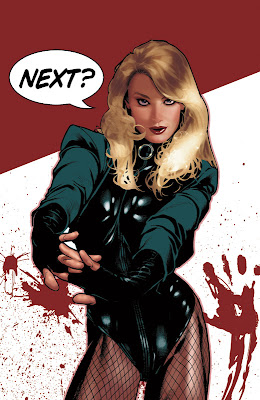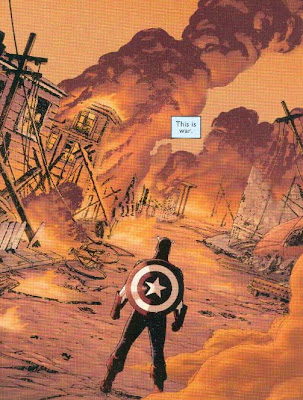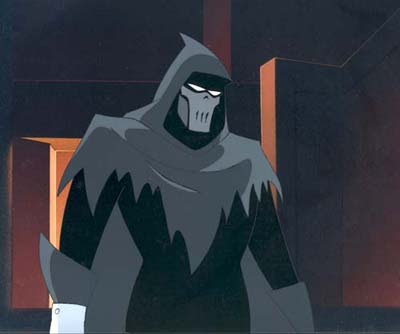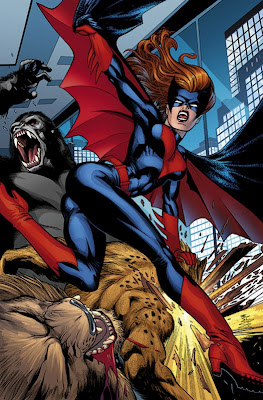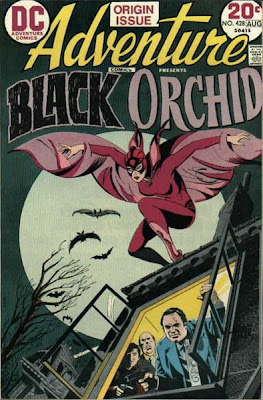
Although she has a number of superpowers —she can fly and is super-strong and bulletproof- her main ability is a mastery of disguise. She often spends an entire investigation impersonating an insignificant background female, such as a maid, a secretary, someone's girlfriend, and the other characters only discover her involvement at the end of the story upon finding the abandoned disguise with her calling card, a black orchid.
After appearing in Adventure Comics #'s 428–430, she next appeared as a backup feature in The Phantom Stranger #'s 31–41 (1974–1976), after which the character appeared only sporadically, such as an occasional cameo in comic books as diverse as the Crisis on Infinite Earths 12-issue limited series and Blue Devil Annual #1 (both 1985). She also appeared in Suicide Squad as a member of the team in issues #4, 7, 11, 12, 19, and 22 (1987–1988).
In 1988, the character was relaunched in a three-part limited series called Black Orchid which was written by Neil Gaiman and illustrated by Dave McKean. The miniseries fleshed out the character considerably, providing an origin story which explained how and why she became known as Black Orchid. It also gave the character a civilian name in her origin sequence, Susan Linden-Thorne. She was given ties to the characters Swamp Thing, Floronic Man, and Poison Ivy.
The original Black Orchid is killed in this miniseries, and a new one which is a "sister" of sorts to the original is introduced. She goes under the alias of Flora Black to meet with Sherilyn Sommers, her closest friend.
An ongoing Black Orchid series, published under the Vertigo imprint, featuring the new Black Orchid, ran from 1993 to 1995. The second version of the character used pheromone manipulation as mind control to became a femme fatale, breaking and marrying millionaire Elliot Weems to claim his fortune and company business as her own. She then became the series' major villain in the closing story arc. She perished in the final issue. Her companion, a child version of Black Orchid heretofore nicknamed "Suzy", had matured over the course of the series, taking up the mantle of the Black Orchid as a young adult.
The grown-up Suzy is identical to her "sister" and carries on the tradition in both the DC Universe and related Vertigo titles. She has appeared in four event titles: 1999's Totems graphic novel, 2001's Justice Leagues miniseries, 2005's Day of Vengeance miniseries, and 2006's Infinite Crisis miniseries. She is at present an ally of the Shadowpact.

